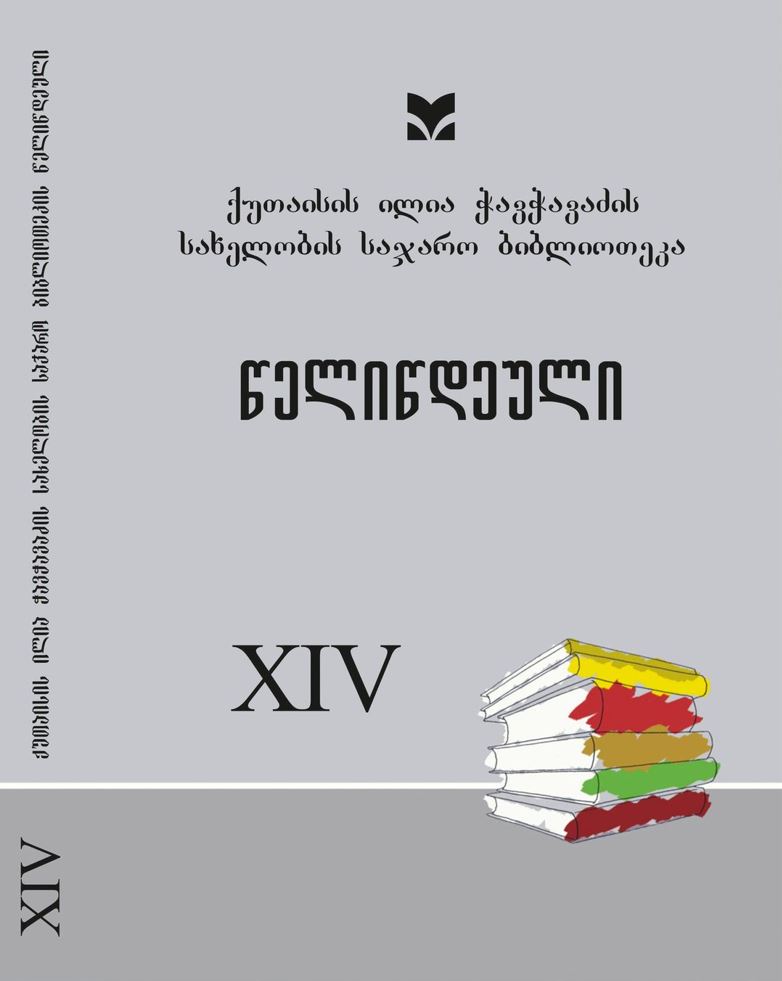დასავლეთ საქართველოს (აფხაზეთის) ეპიგრაფიკის ენობრივ-პალეოგრაფიული თავისებურებანი
DOI:
https://doi.org/10.61491/yk.14.2022.7007საკვანძო სიტყვები:
დასავლეთ საქართველოს (აფხაზეთის) ეპიგრაფიკა, ქართული წარწერები აფხაზეთში, აფხაზეთის ეპიგრაფიკული ძეგლების ენაანოტაცია
As indicated by historical documents, Abkhazia has consistently been an inseparable part of the Georgian kingdom, with its population being Georgian. The existence of a unified civilization in the region is evidenced by inscriptions, manuscripts, and historical records. It is important to emphasize that the Adyghe (Abazines) tribe, who lacked literacy and a written alphabet, could not have fostered the remarkable culture that thrived in Abkhazia.
The animosity exhibited by Apsua separatists towards Georgians was nurtured under the influence of Russia, as they sought a common ground to rally around. The Apsua people, presenting Russian script and language as their own, pretended to develop the Apsua language—an endeavor that remains unfounded and unacceptable. There was never a Georgian issue in Abkhazia, nor were there any significant scholarly investigations being conducted.
In his essay, Vakhushti highlights three names for the country: Egris, Abkhazia, and Imereti. The term „Egris“ originated from Targamos› son, while „Abkhazia“ is linked to Levan, who eventually ruled over Abkhazia following the reigns of the first Leon and the second Levan. After Leon Khosrovani›s demise, he claimed full authority over both Egris and Abkhazia, renaming the entire territory his kingdom. During that period, they had conquered all of Abkhazia, and the broader Georgian region was referred to as Kartli Amereti, with Abkhazia specifically denoted as Imereti or Imerni. This integration was primarily aimed at unification (Vakhushti Bagrationi, 1997, p. 145).
The epigraphic monuments in Abkhazia primarily date back to the 8th-10th centuries. The study of these monuments holds great significance for the understanding of the Georgian language and the broader historical context. Epigraphic artifacts are scattered throughout the entirety of Abkhazia.
The inscriptions frequently employ the karagma, a symbol representing the abbreviation of words. A small cross symbol () is a prevalent feature in most inscriptions. Furthermore, descending diphthongs formed by the letter ჲ (iota) can be observed. Additionally, non-syllabic/u/ is confirmed after a consonant, while the sound ჴ (khari) has been incorporated into the word roots. Numerous phonetic and morphological elements are also discernible. The epigraphy of Abkhazia stands as a remarkable testament to the rich Georgian culture, crafted by skilled hands.
Main findings: As indicated by the research, the Apsua separatists, who are deemed hostile by the central power, are residents of the northern part of the Caucasus and have no written language. They were unable to create or establish written texts and compile any manuscripts and build churches. Their settlement occurred later, but they remained in the minority. They adopted the Georgian alphabet, while Abkhazia, on the other hand, sought to differentiate itself, but all of this proved to be merely fictional.




